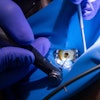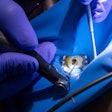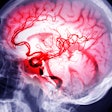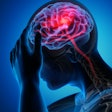
ANAHEIM, CA - By understanding how inflammation and oral bacteria affect systemic health, the dental team can help save both teeth and lives, according to a presentation by DeWitt Wilkerson, DMD, on April 30 at the California Dental Association's CDA Presents 2015 conference.
Dentists control inflammation already, and they can further stop and reverse systemic inflammation through traditional dental techniques and alternative wellness solutions. Specifically, dentists can improve patients' lives -- and also their own profit -- by rethinking periodontal conditions, screening each patient for sleep apnea, and educating patients about nutrition.
In doing so, the whole dental team helps reduce patients' risk of heart attack and diabetes, and they can find additional ways to treat more health problems in-house. The key is to care about each patient's full-body health.
"If we can teach people how to take care of themselves ... by golly we can reduce the healthcare cost dramatically throughout a lifetime and bring the cost of healthcare down," Dr. Wilkerson said.
Rethinking perio conditions
About a dozen of the nearly 7,000 types of oral bacteria can wreak havoc on the body, not just the oral cavity. Dr. Wilkerson explained that a number of different disorders are directly associated with oral bacteria getting into the bloodstream.
One study he cited looked at blood clots from acute heart attacks and strokes. The researchers found that oral bacteria in the clot were 16 times more concentrated than in the surrounding blood.
“If we can teach people how to take care of themselves … by golly we can reduce the healthcare cost dramatically throughout a lifetime and bring the cost of healthcare down.”
"Periodontal pathogens in coronary plaque are not coincidental, they may contribute to the development of coronary plaque," he said. "You can get an infection site there kind of like a pimple and ... if it gets weak enough, it can break lose, and if it breaks lose it can cause a heart attack or stroke."
One way to help combat oral and systemic inflammation is to rethink periodontal disease. When the dental team only associates a periodontal condition with pockets, they may be missing other inflammation issues.
"We should think anyone with bleeding has a periodontal condition, regardless of whether they have pockets," he said, as oral bacteria can transfer to other parts of the body through the bloodstream. "Does this make sense? We're becoming physicians of the mouth. ... Sometimes there is more going on than might be seen, not just orally but also systemically."
Dr. Wilkerson recommends salivary testing for anyone with a perio condition. While the tests can be pricey at about $100, he believes they are a crucial part of diagnosing and reversing oral bacteria and inflammation.
"If we could show patients we'll have to spend a little bit of money doing testing, but it'll save them a lifetime worth of money ... I haven't had anybody say, 'Not just yet,' because it makes so much sense," he said.
The salivary tests show whether patients have abnormally high levels of bacteria associated with heart disease, diabetes, and other total-body conditions. Once a dentist determines the patient is at risk, Dr. Wilkerson recommends one or more options to help control harmful oral bacteria:
- Antimicrobials
- Antibiotics
- Aids (such as Waterpik or ViaJet)
Dr. Wilkerson acknowledged that some dentists may be opposed to prescribing antibiotics for oral bacteria and admits he used to think the same way. However, he stressed the importance of antibiotics for patients with high levels of certain bacteria, as they may be a core cause of life-threatening diseases.
"Now, I don't look at it like we're killing a mouse with an elephant gun. I think of it like we're killing an elephant with an elephant gun," he said. "These are some nasty, nasty bugs."
Dentists can also become educators for others in the healthcare system. Because the dental team members already know about oral bacteria and inflammation, they are prime educators for other types of doctors who do not know as much about it.
One dentist who Dr. Wilkerson knows started educating physicians about the oral-systemic link. Soon, the physicians began referring patients with heart disease to him.
"He has a practice where they did $2.2 million. Half of that [$1.1 million] of his $2.2 million was coming from physicians," Dr. Wilkerson said. "He has created this tremendous program."
Dentists should look for sleep apnea
While sleep apnea is not an "oral disorder" necessarily, it presents in ways that can be more easily detected by dentists than other types of practitioners, notably through bruxism, clenching, and gastric reflux.
It's important for dentists to screen patients for sleep apnea because it affects the functioning of the entire body. During the night, people with sleep apnea stop breathing, activating the fight-or-flight response and raising levels of cortisol in the blood. This momentarily wakes the person so they begin breathing -- only for the "wheel of death," as Dr. Wilkerson called it, to continue.
Dr. Wilkerson screens every one of his patients for sleep-disordered breathing. He first has patients answer questions such as whether or not they snore, and he then looks for bruxism, clenching, and gastric reflux during the oral exam.
"Bruxism is actually a movement to open the airway," Dr. Wilkerson explained.
For patients who show signs of sleep apnea, his practice has home monitors that patients can use themselves, or they can see a sleep specialist. He also encourages doctors to pursue minor lifestyle changes for patients with sleep apnea. For example, a patient may have severe sleep apnea when sleeping on his or her back, but not in any other sleep position.
It is especially important to screen children, who are often misdiagnosed in the healthcare system.
"Sometimes these children are being diagnosed with attention deficit disorders, learning disabilities ... when they're just trying to breathe," he said.
How to become a dental practitioner
Dr. Wilkerson emphasized the importance of dentists not only treating the oral cavity, but also thinking about how changes in the mouth impact and reflect changes elsewhere in the body. He encourages dentists to become what he calls dental practitioners, by thinking about total body wellness for each patient.
For example, dentists and hygienists should take the time they have with patients to educate them about oral and systemic health, especially because the dental team spends more time with patients than other doctors.
"The average physician spends seven minutes every two years with their patient," Dr. Wilkerson said. In contrast, dentists and hygienists see patients twice a year and have a captive audience while they are in the chair.
He encourages the whole dental team to educate patients about nutrition in particular. While dentists often talk to patients about how sugar affects teeth, they can also use the opportunity to educate patients about how other foods, such as processed carbohydrates, cause body-wide inflammation.
Dentists can also creatively introduce this link between wellness and oral health into their practice. For example, Dr. Wilkerson has heard of dental assistants or hygienists who became nutritionists. His own practice has a library of health books that he gives to at-risk patients, and he also started a "fit forever" club as a way for patients to get and stay healthy.
In the end, by educating patients and the community about the link between oral and systemic health, dentists can establish themselves as resources in the community and, hopefully, save teeth and lives.
"The patients know that we love them, that we care about them from the beginning to the end," Dr. Wilkerson concluded. "What we're saying is that we're there to be your advocates; we're here to be behind you."



















